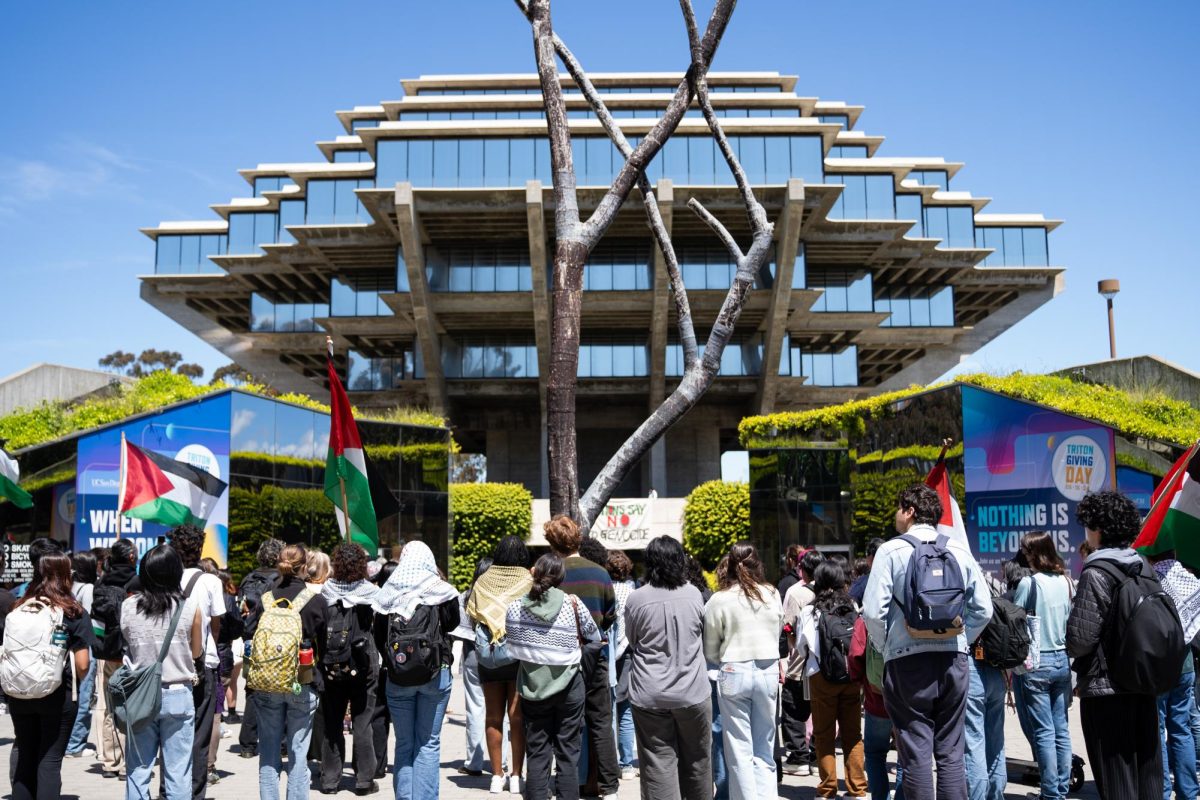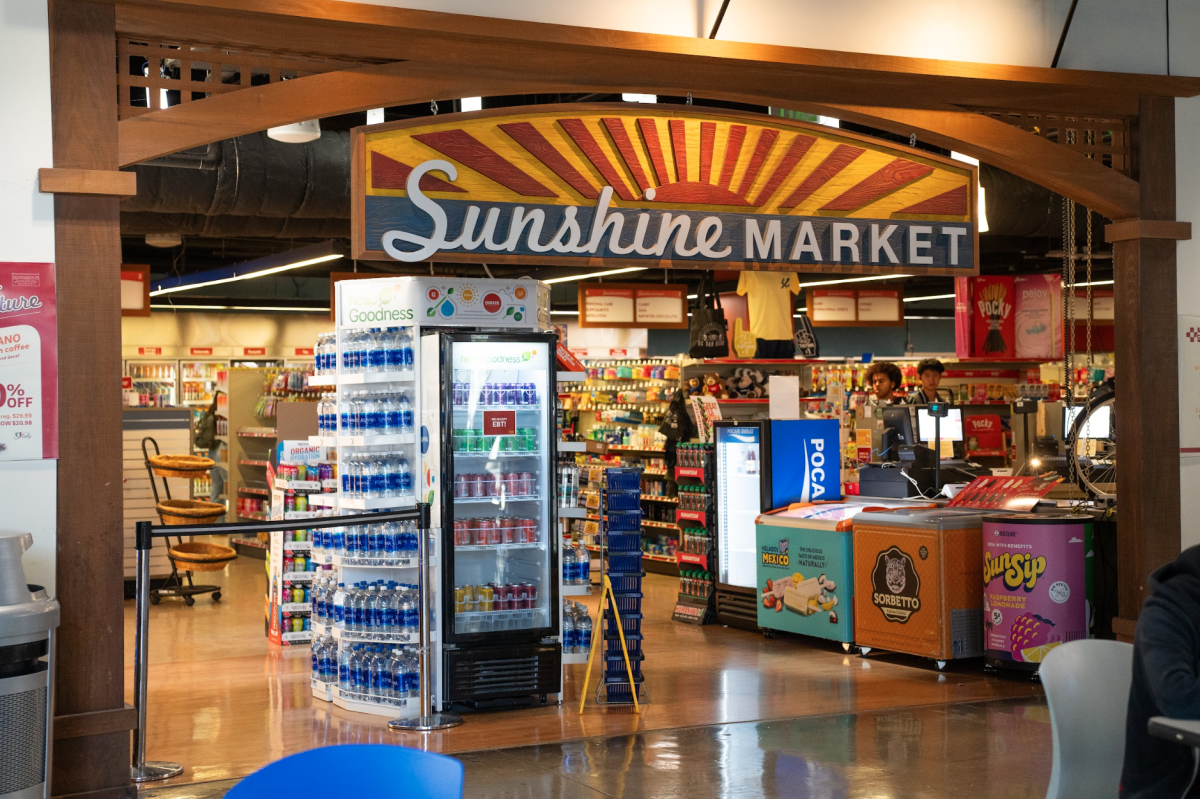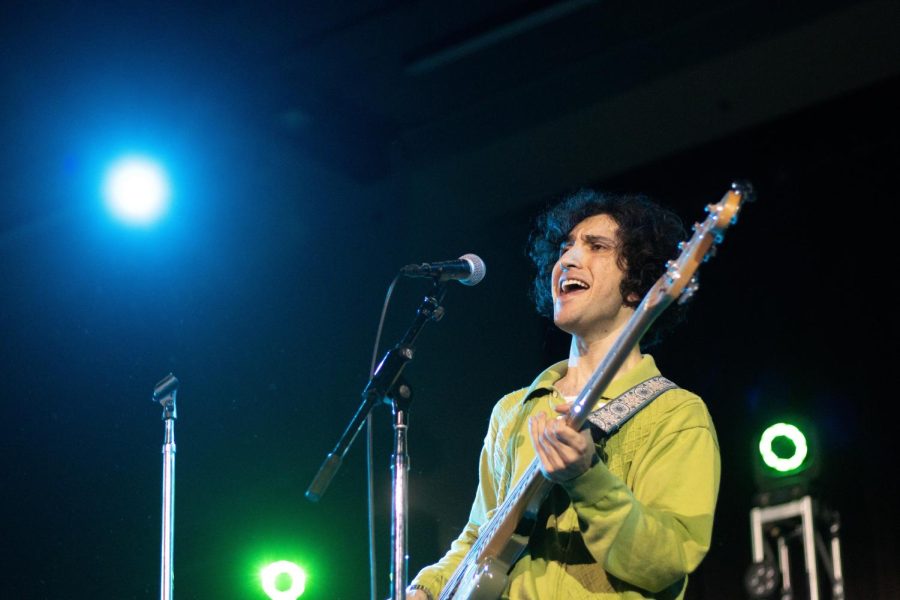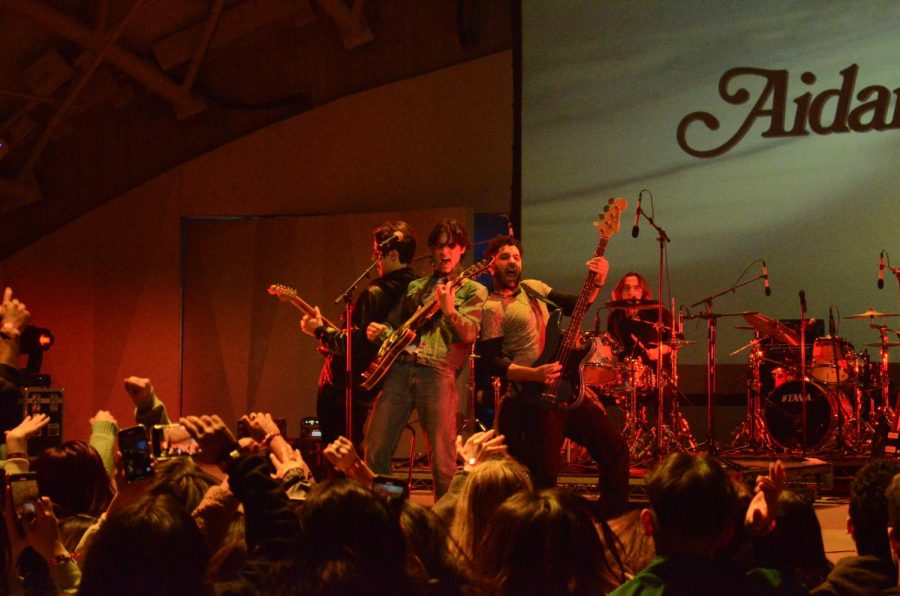Efficiency and organic aesthetics will be the hallmarks of both the Gilman and Hopkins Parking Structures this year, with the installation of a new, environmentally conscious technology called the solar tree.
Once installed on the roofs of the two parking structures, the new solar panels are intended to provide a wealth of clean electricity for campus, create shade for parked cars and supply charging boxes for electric vehicles, while remaining pleasing to the eye.
The solar tree structure, designed by the San Diego-based company Envision Solar, consists of a single column with a large solar “canopy” resting on top. The column itself will act as a bollard to stop the vehicle in the parking space.
Envision’s solar tree was chosen for having the best cost-for-quality value among other competitive bids to place solar panels atop the two parking structures.
The entire solar project will produce one megawatt of energy for the campus. According to UCSD Energy and Utilities Manager John Dilliott, putting up additional solar panels would have been economically unfeasible because one megawatt is the incentive cap provided by the state.
Solar Power Partners, a California solar-power project developer, is funding the $9-million project in conjunction with UCSD. The campus will be paying for the energy through SPP as part of a 20-year contract, after which the entire system will be owned by UCSD. The cost will come out of the campus’ monthly utilities budget at the same price as energy purchased from the campus’ previous electricity supplier.
“We’re doing what we can with the purchase utilities budget,” Dilliott said.
Although the first columns for the solar trees were installed in September, the system is not estimated to be fully operational until December, once wiring is complete.
The goal of the solar tree is to eliminate the need for multiple columns to hold up a solar array: As Envision likes to put it, “cars and columns don’t mix.” These structures are an example of bio-mimicry — the application of biological structures to modern engineering, Envision’s Chief Operating Officer Pamela Stevens said.
The solar canopy will maximize its own efficiency by constantly orienting its photovoltaic cells in various positions so that the sun is always in direct contact, at least partially, with the cells.
The panels will also reduce the amount of heat observed in the parking lots. In normal lots, concrete and car metal retain heat in the immediate area, maintaining warmth well into the evening. Photovoltaic panels avoid this heat island effect by directly absorbing the heat.
In addition, the inclusion of an electric car-charging box will not only create some of San Diego’s first electric car infrastructure, but is also part of Envision’s overarching goal to integrate parking.
Envision predicts that in the future, parking near a solar tree will double as a trip to refuel with clean solar electricity. According to Stevens, refueling will no longer exist as a distinct event, but will rather be integrated into everyday driving activities.
Solar trees are one small step toward UCSD’s goal to become to being a leader in renewable energy use among universities nationwide. Although state incentives for solar power are capped at one megawatt, the campus is looking into other forms of renewable energy.
“We’re pursuing a fuel cell and wind power, which each have their own incentives,” Dilliott said.
The fuel cell, which will convert waste methane to electricity, is projected to increase UCSD’s green energy production from one megawatt to 2.5 megawatts.







